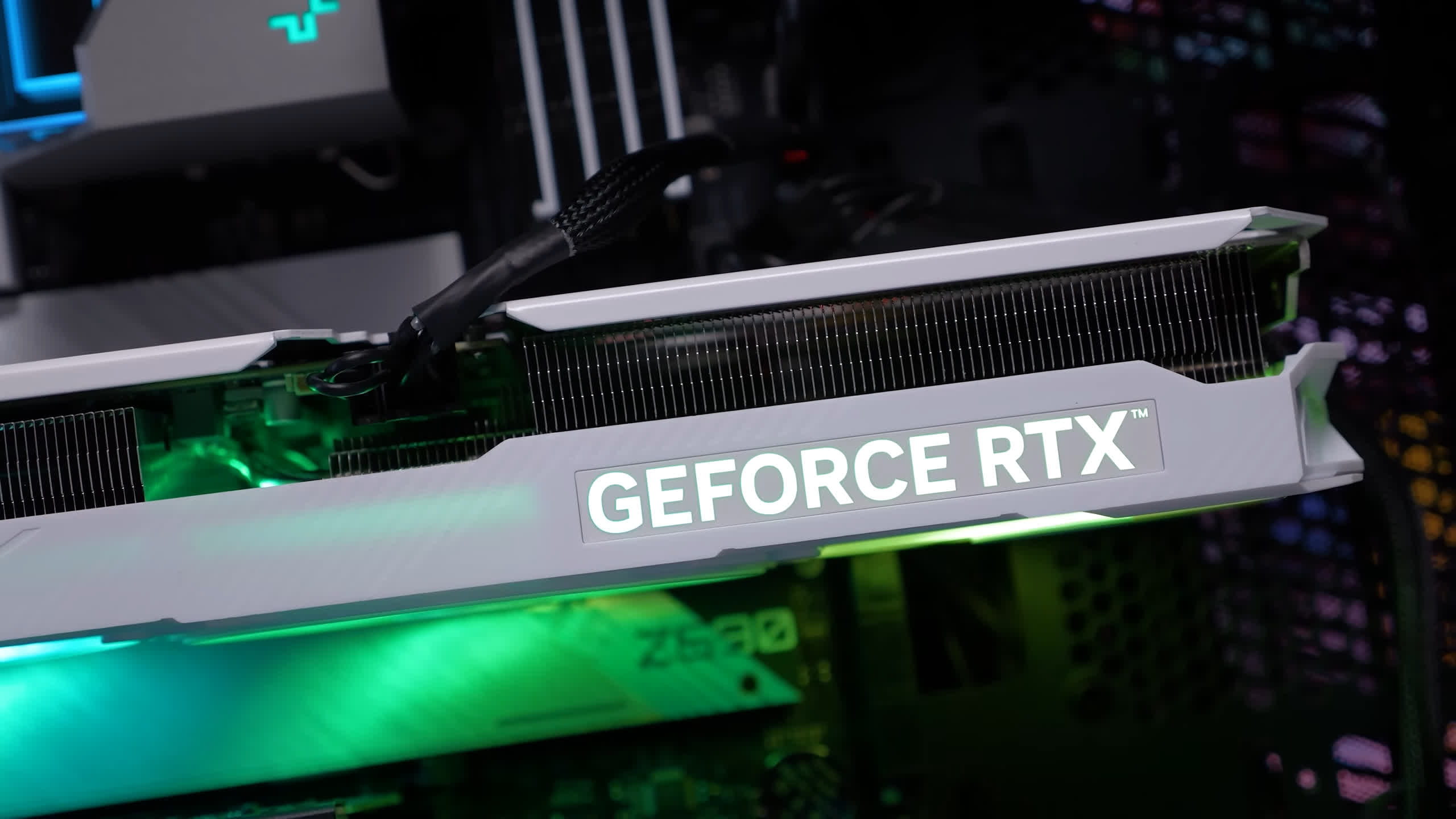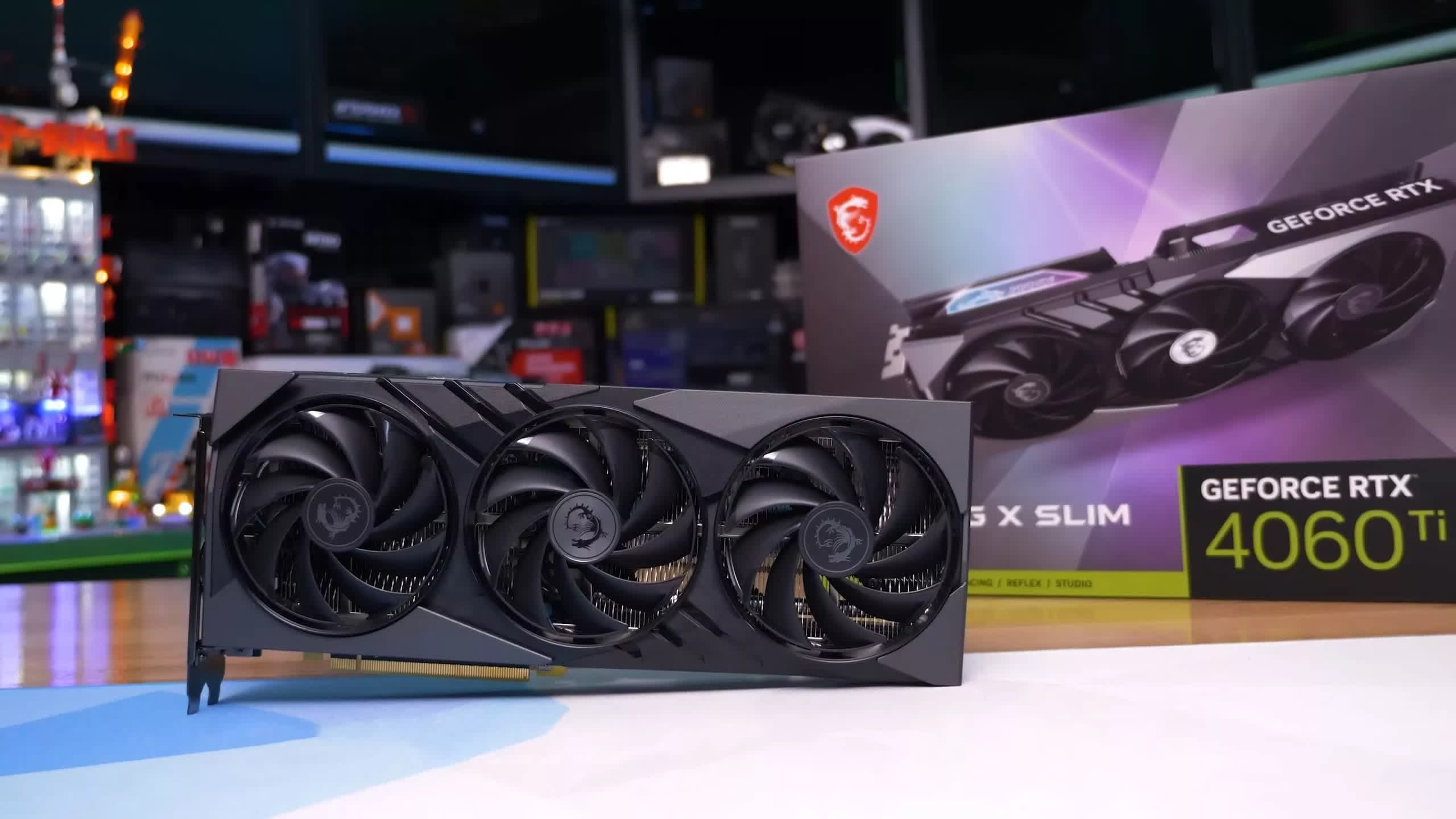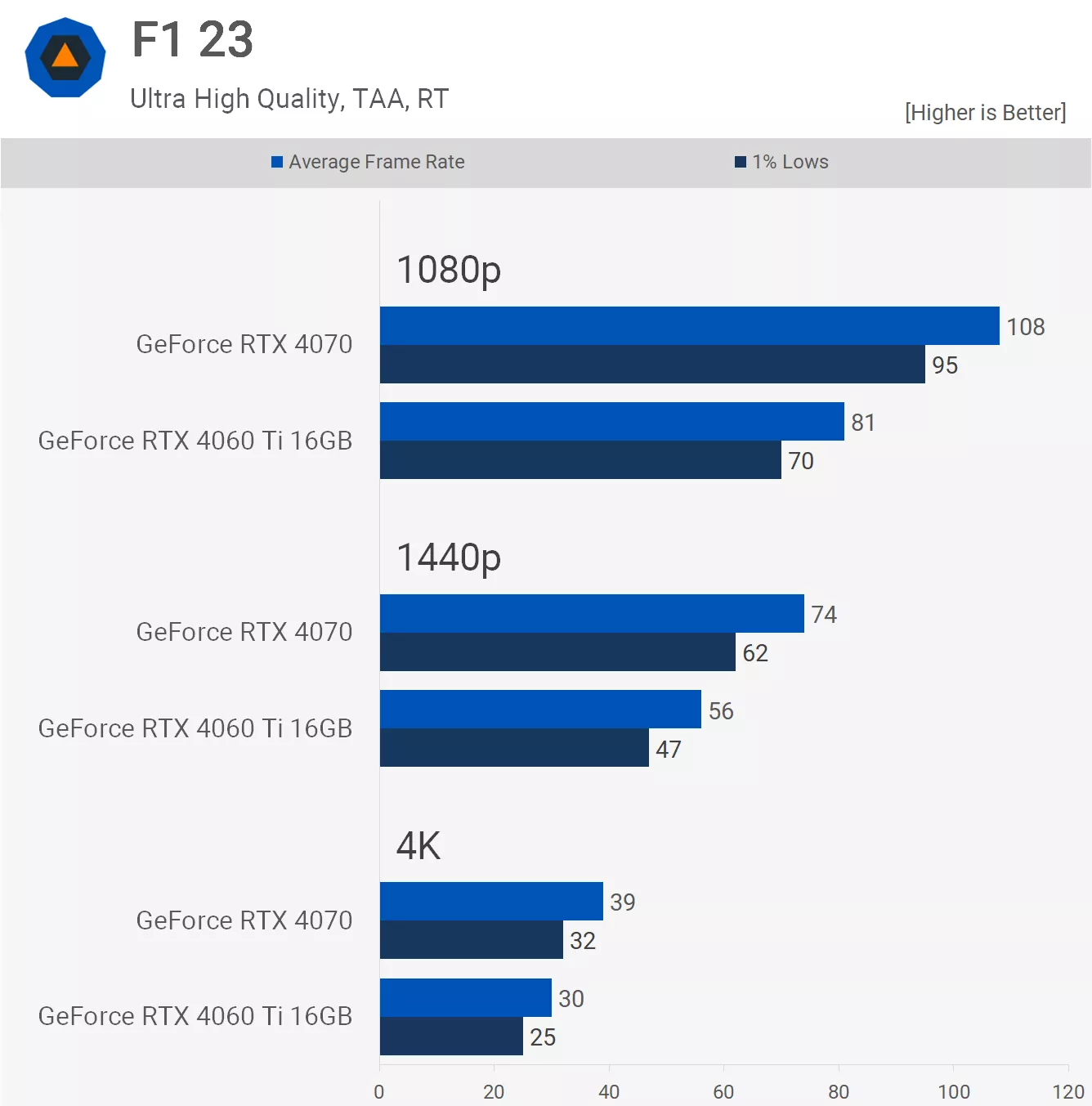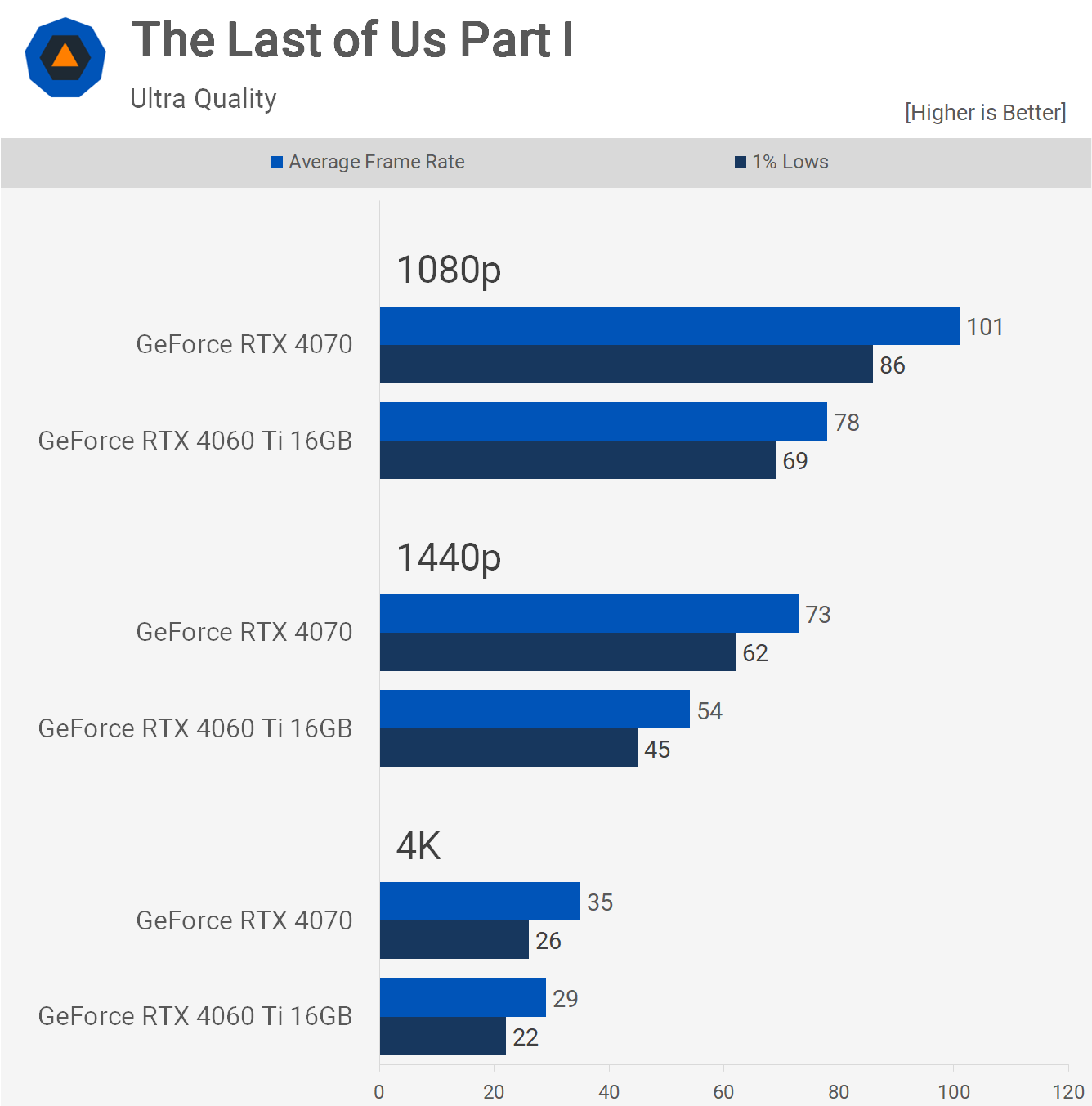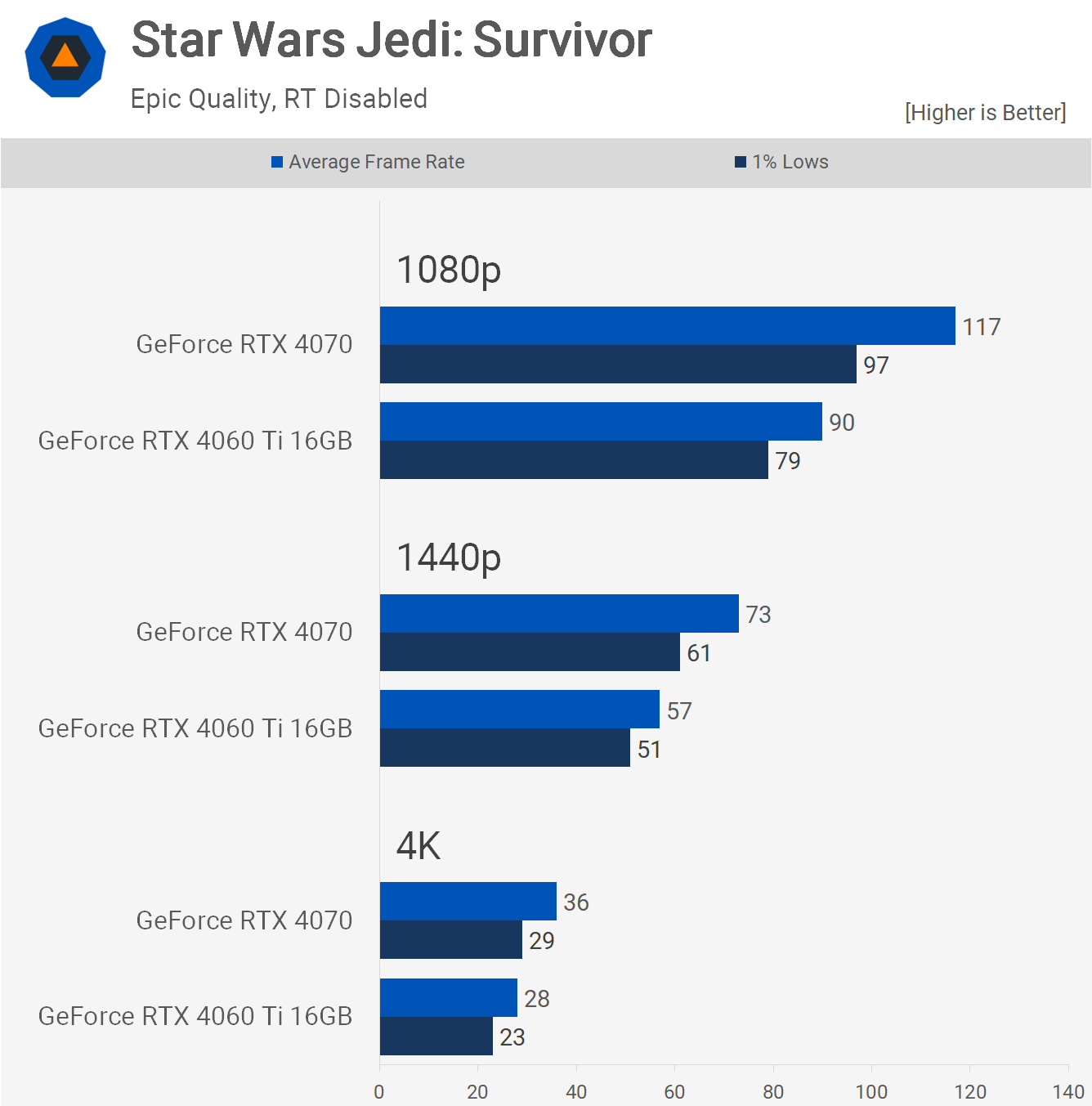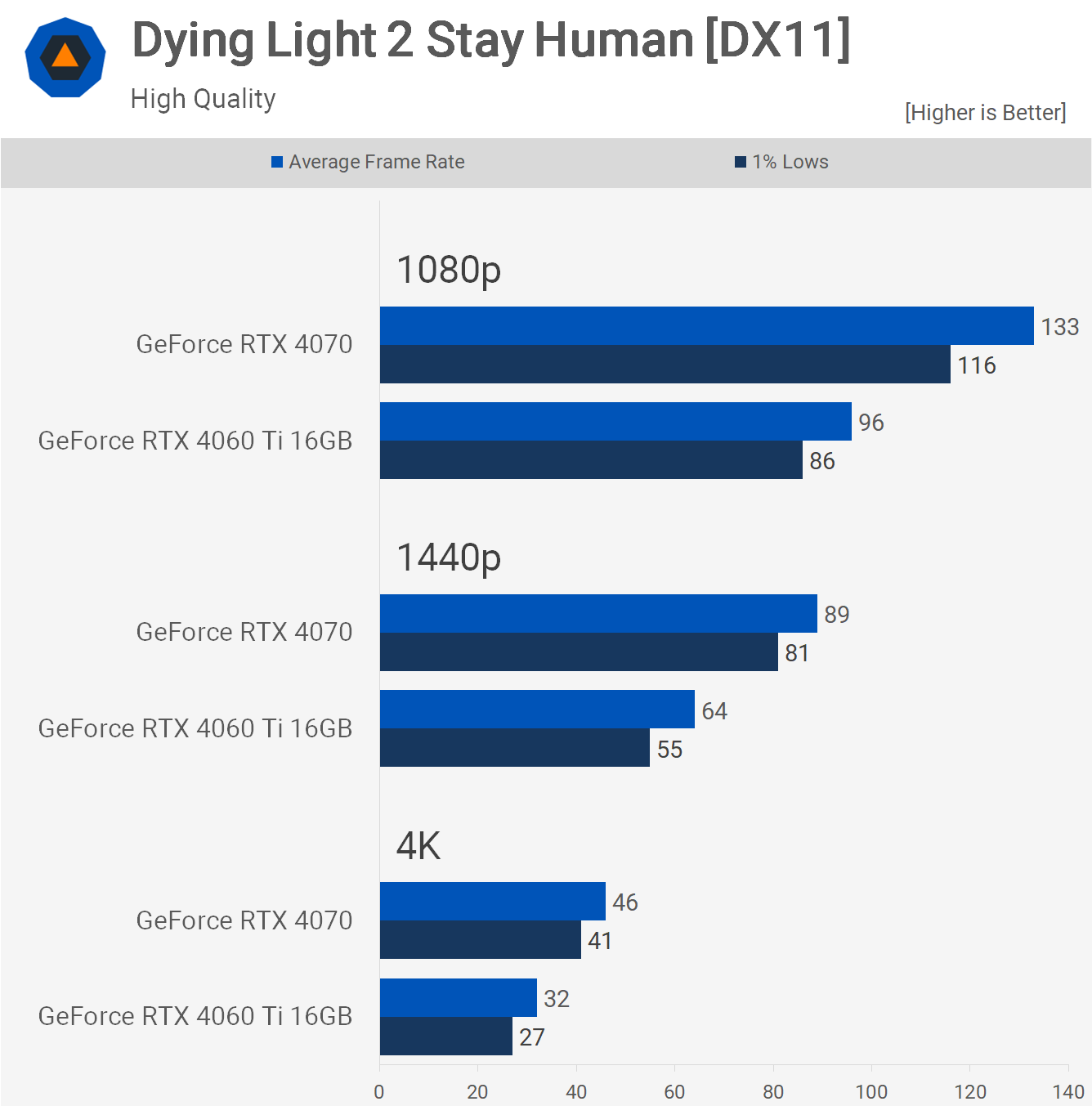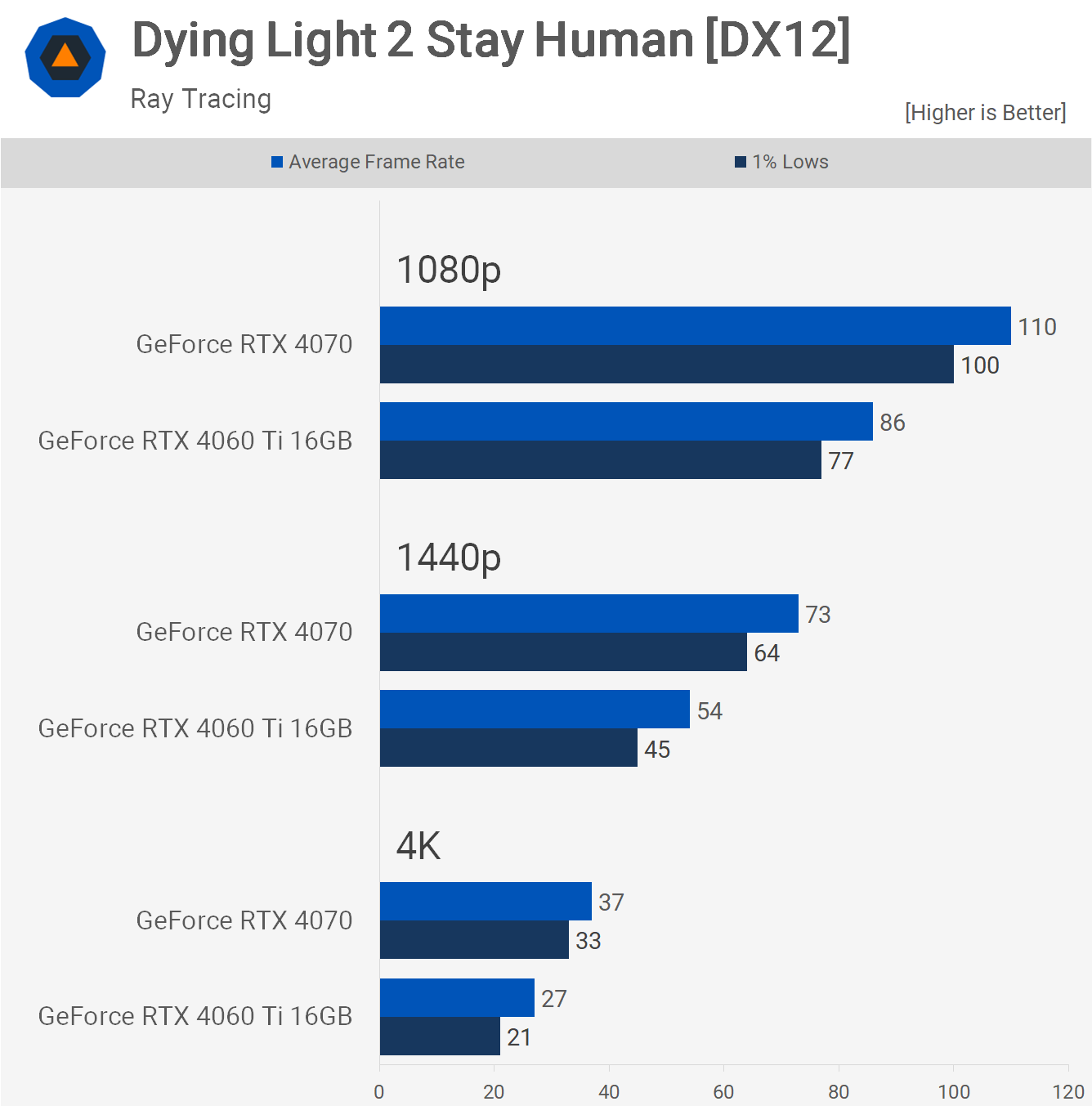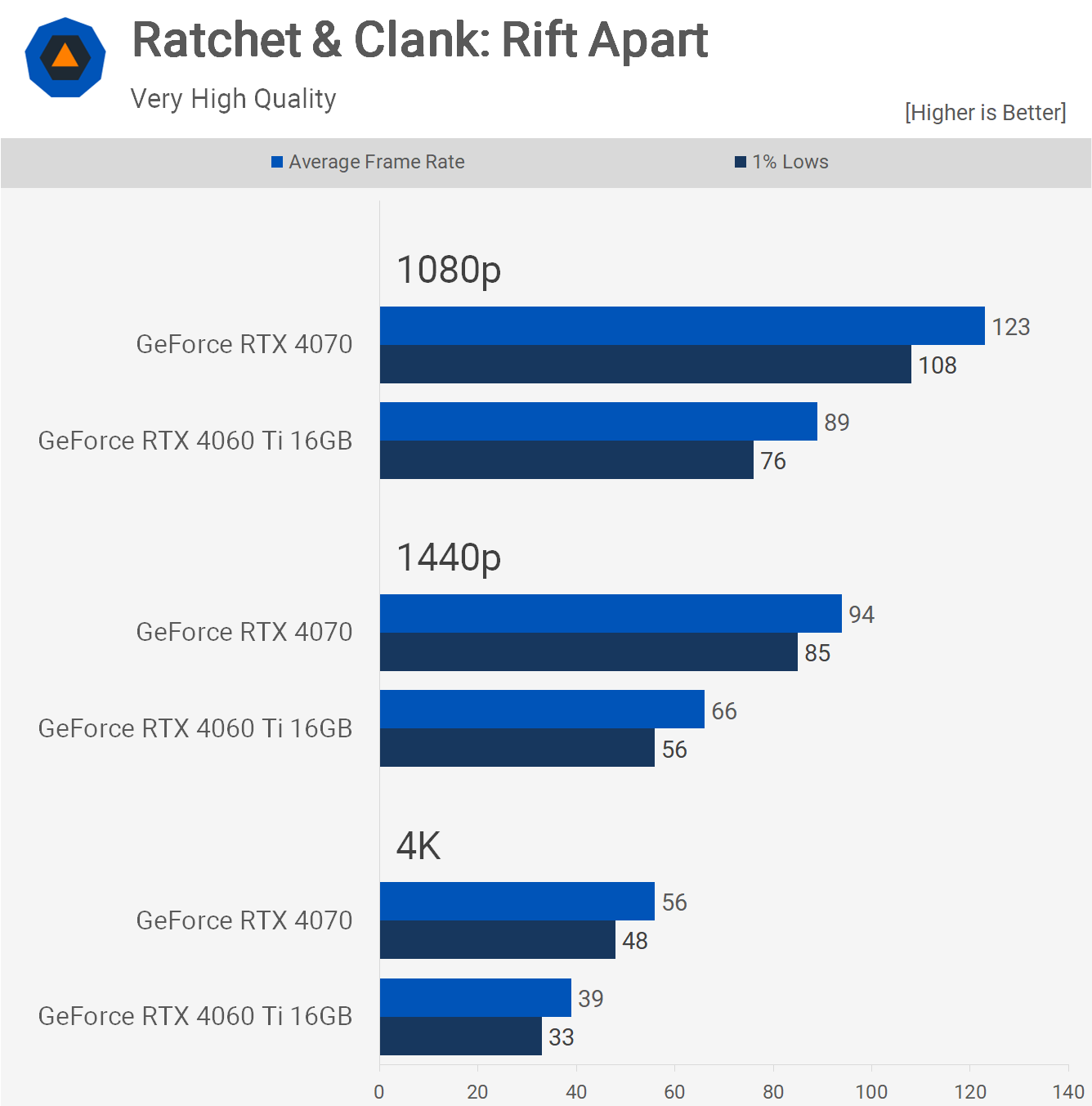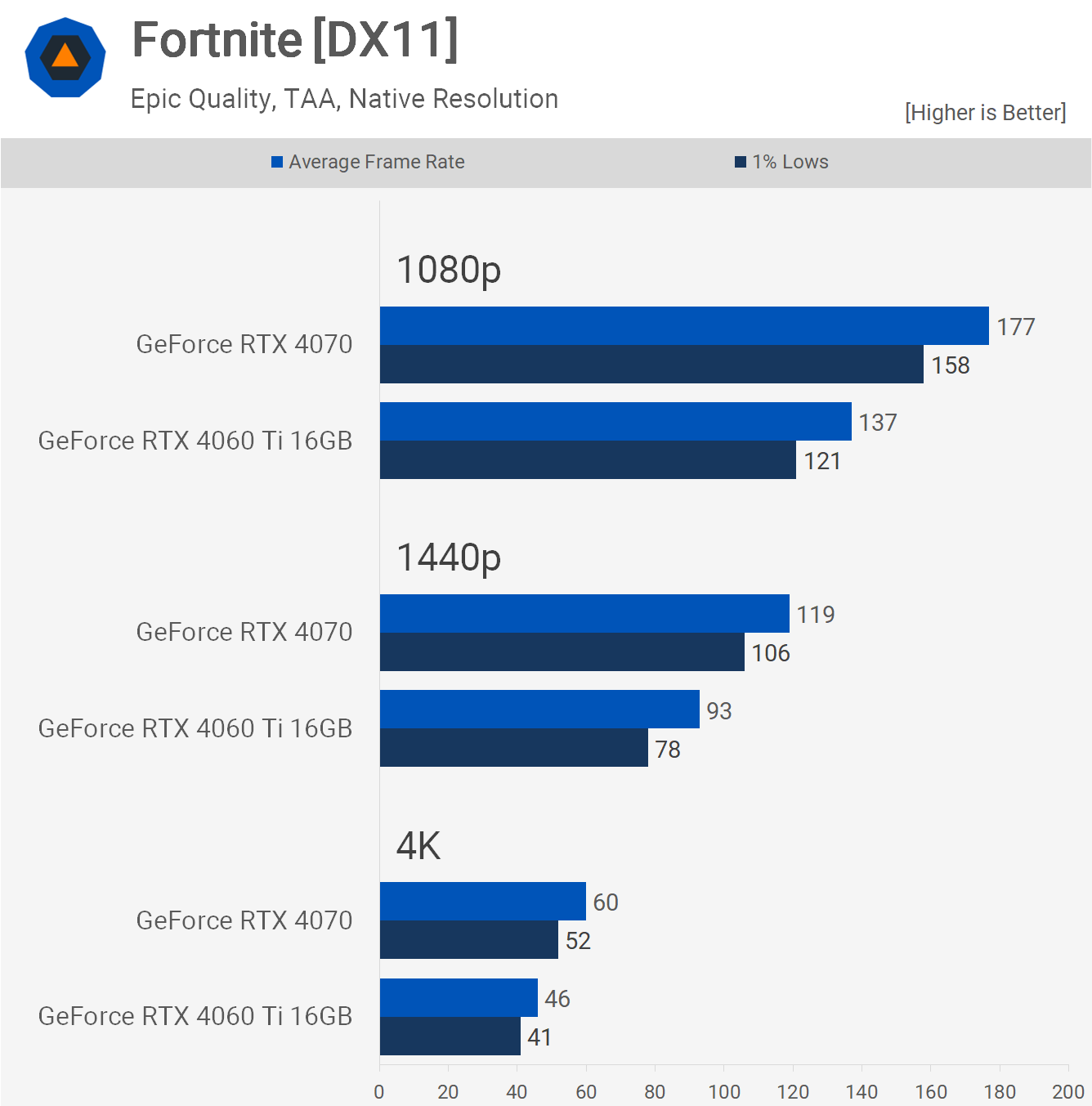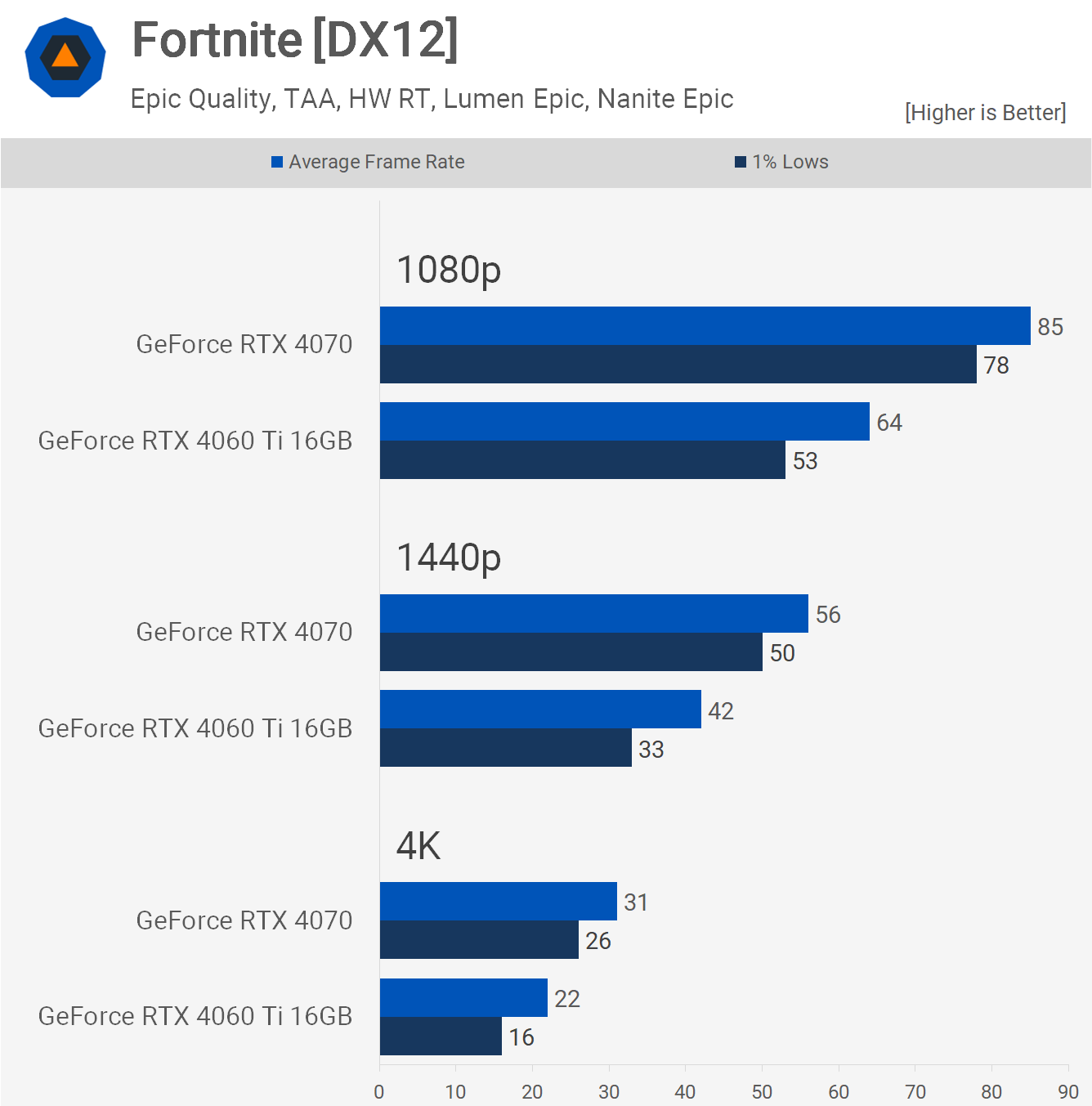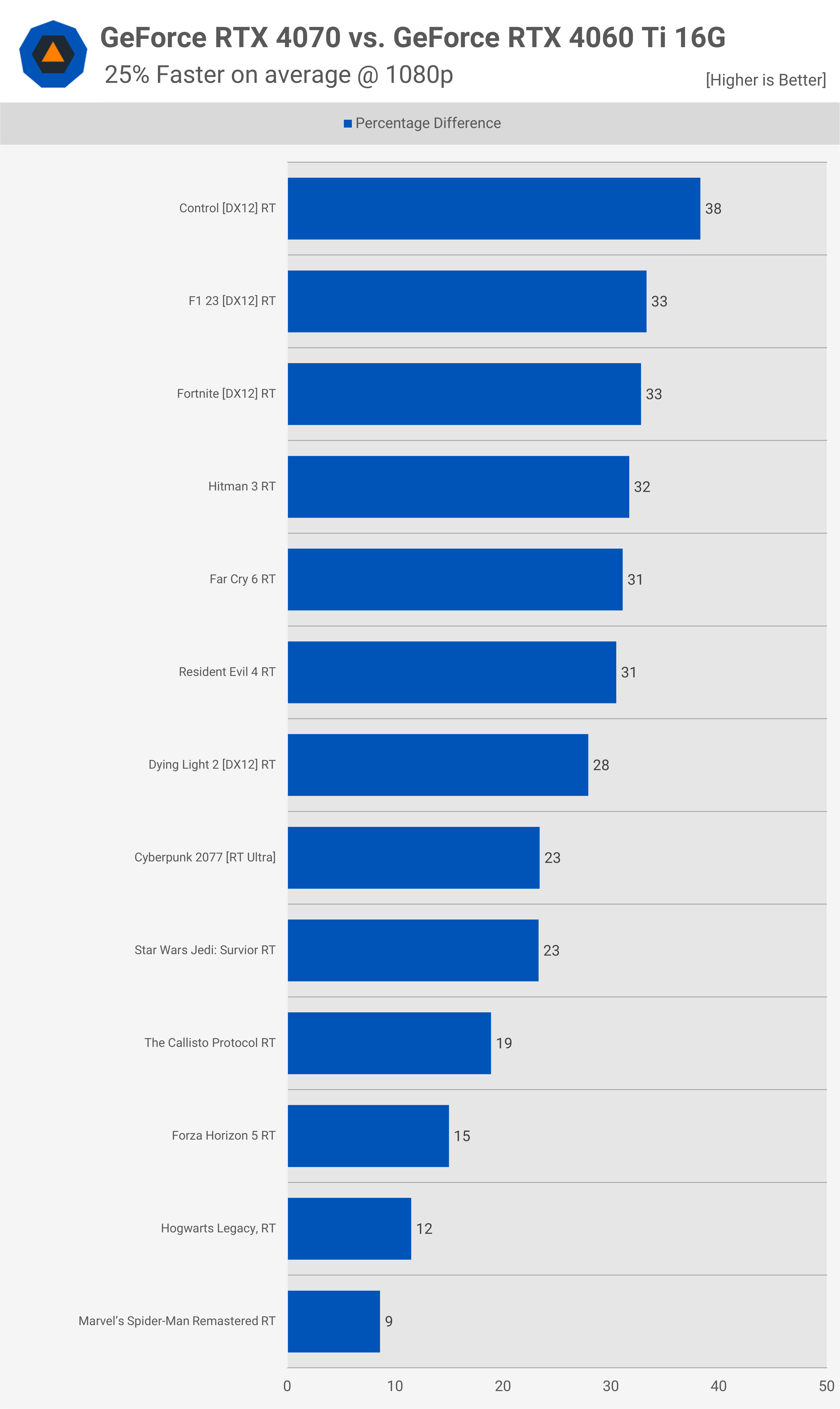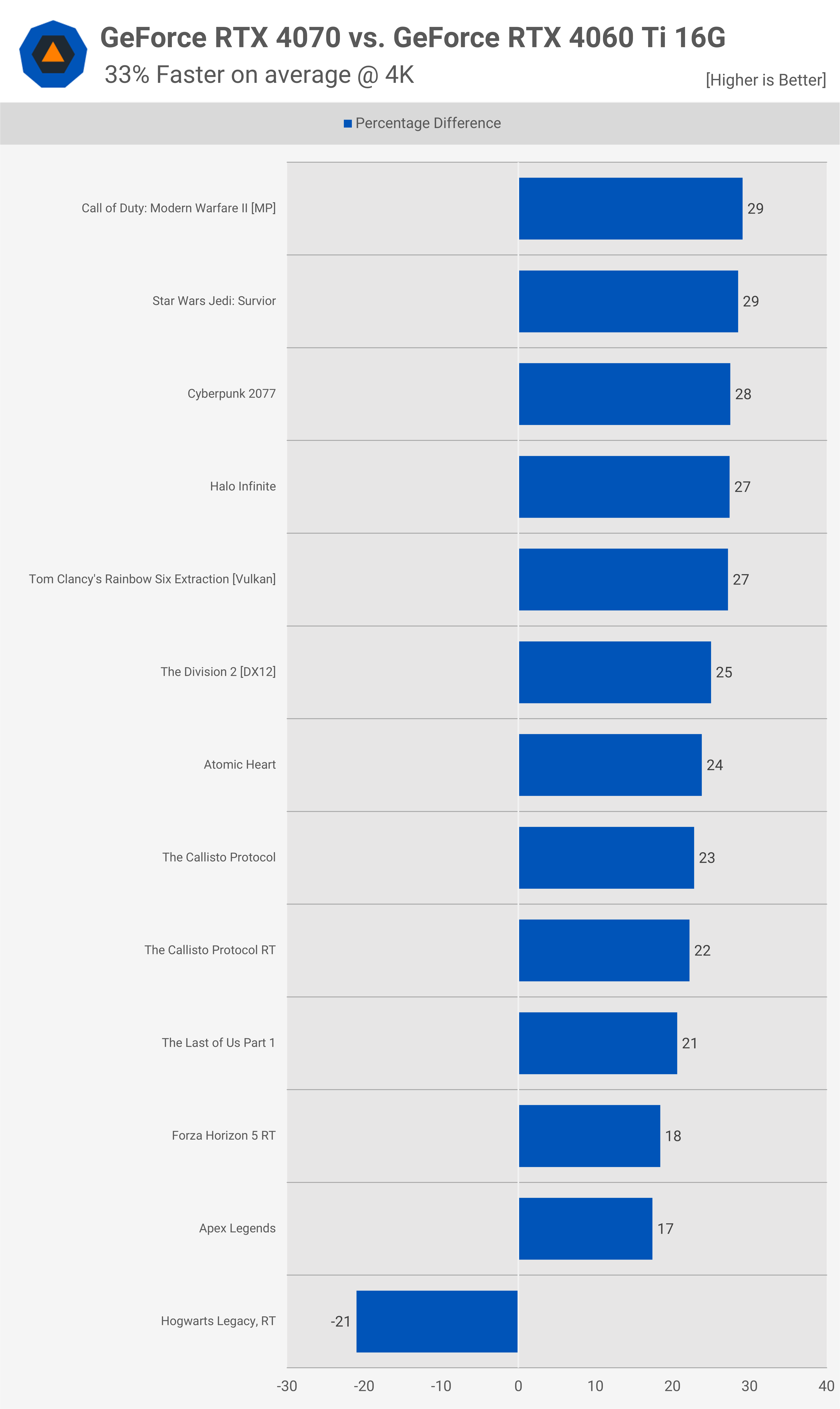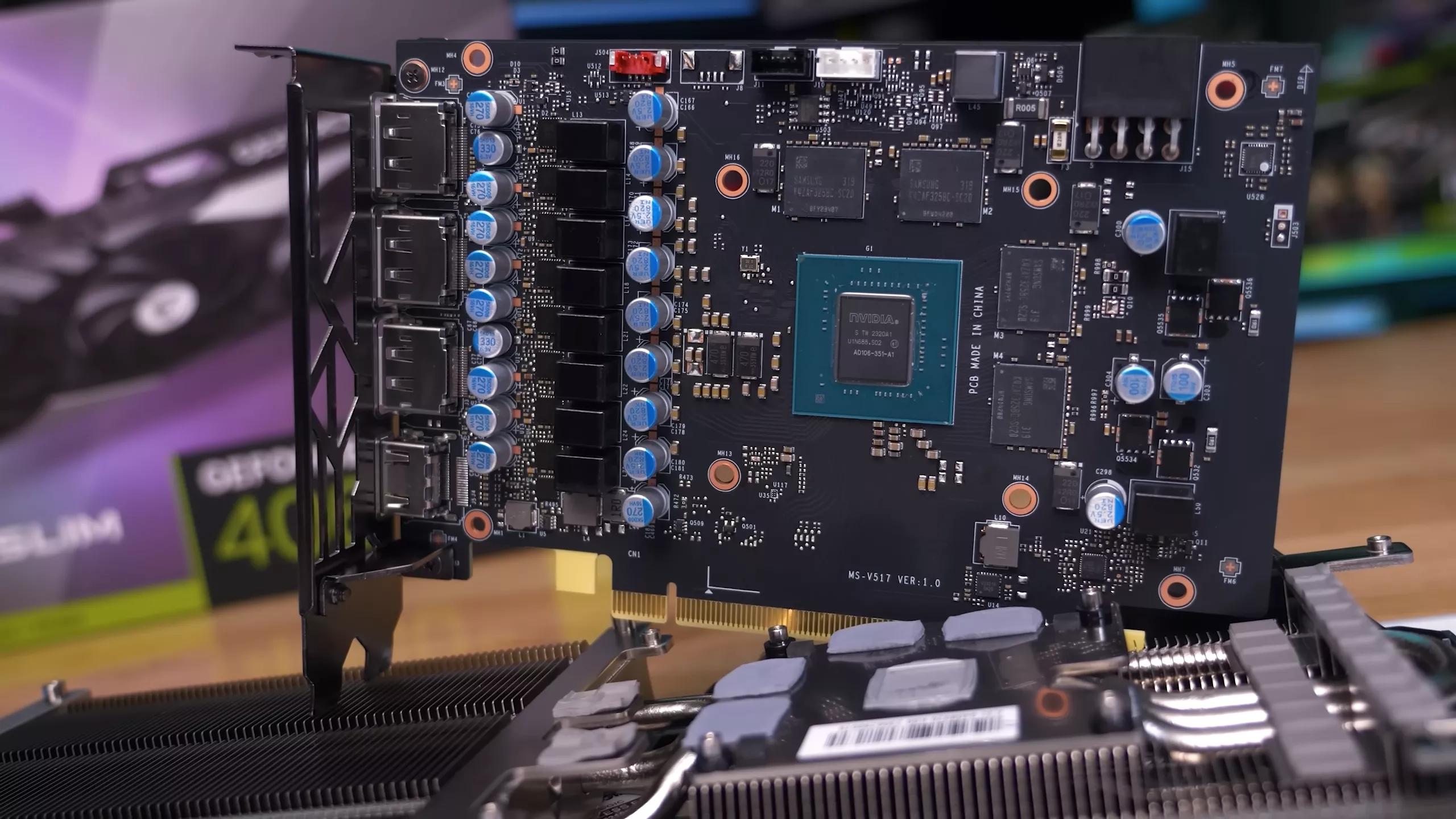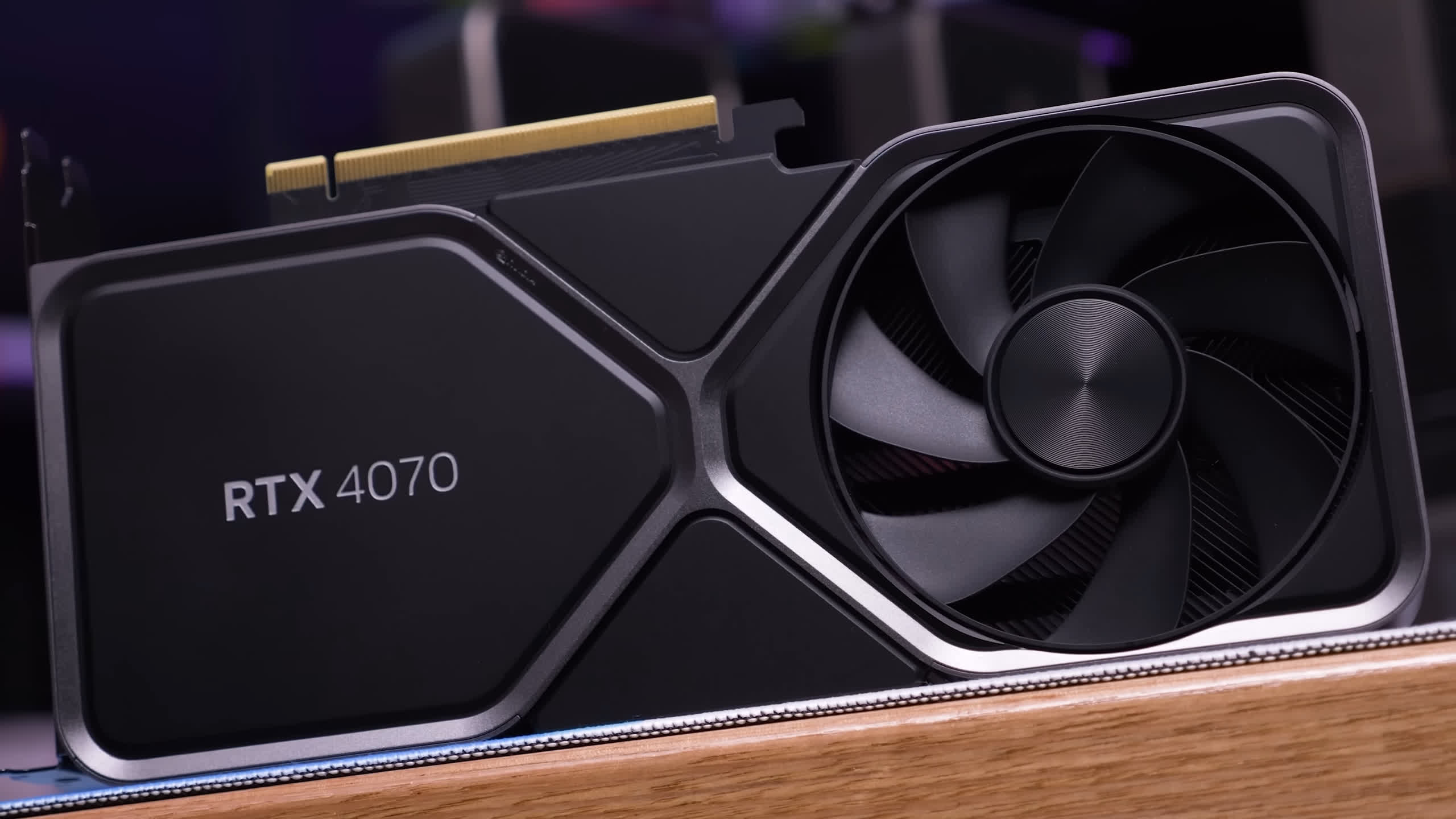Today, we're comparing the GeForce RTX 4070 head-to-head with the more affordable RTX 4060 Ti 16GB GPU. Recently, pricing for both of these GPUs have seen an adjustment, the former dropping to $550 from the initial $600 MSRP, while the the 16GB 4060 Ti has taken a similar cut from $500 to the current $450 retail price.
This is partly explained as Nvidia reacting to the recent introduction of the Radeon RX 7800 XT.
Speaking of which, if you have a budget of around $400 to $600 for a new graphics card, we highly recommend exploring the 7800 XT. We perceive it as the best value in this price range currently. However, if you specifically want a GeForce GPU, your choices are the RTX 4060 Ti 16GB and RTX 4070.
With a price tag of $450, the RTX 4060 Ti 16GB is 25% more affordable than the RTX 4070. Nevertheless, most models remain closer to the $500 MSRP, making them just 17% less expensive. This is still an attractive discount, and one advantage is that the RTX 4060 Ti provides more VRAM.
However, it comes with 26% fewer CUDA cores, an 11% decrease in L2 cache, and due to slower memory and a narrower memory bus, bandwidth has diminished by a substantial 43%. This suggests there will be situations where the 4060 Ti significantly lags behind.
For our tests, we have used a Ryzen 7 7800X3D paired with the Gigabyte X670E Aorus Master and 32GB of DDR5-6000 CL30 memory. We will briefly discuss the data for about half a dozen titles before delving into comprehensive comparison graphs. The resolutions of interest here are 1080p, 1440p and 4K. In total, we've examined 56 configurations. As always, all data presented is current and updated for this presentation. Let's dive in...
Benchmarks
Starting with F1 23, we find that at 1080p, the 4070 is 20% faster, but then 30% faster at 1440p and 4K. This is a reasonable outcome for the 4060 Ti 16GB, especially considering the 4070 is now 33% more expensive.
When ray tracing is enabled with the ultra-high preset, the 4070 boasts a 33% advantage at 1080p, 32% at 1440p, and 30% at 4K – margins quite similar to what we observed using the high preset.
In Hogwarts Legacy, the scaling is comparable. The RTX 4070 is up to 32% faster, particularly noticeable at 4K.
With ray tracing activated, we experience CPU limitations at 1080p using the RTX 4070, making it merely 12% faster than the 4060 Ti. However, this gap widens to 42% at 1440p. At 4K, performance for both GPUs is disappointing, although the 4060 Ti does edge ahead, possibly due to its additional 4GB of VRAM.
In The Last of Us Part 1, the 4070 delivered 29% more frames at 1080p, 35% more at 1440p, and 21% more at 4K. It appears that VRAM capacity might be a limiting factor for the 4070 at 4K, explaining the narrower performance gap.
In Star Wars Jedi: Survivor, the RTX 4070 was 30% faster at 1080p, 28% faster at 1440p, and 29% faster at 4K, showing consistent scaling across the tested resolutions.
With ray tracing enabled, the 4070 was 23% faster at 1080p. Potential CPU limitations may be influencing these results, especially since the performance gap extends to 37% at 1440p.
Dying Light 2 seems to be memory-sensitive. Here, the 4070 showcases a significant 39% performance enhancement at 1080p and 1440p and 44% at 4K.
With ray tracing activated, the 4070 is 28% faster at 1080p, 35% at 1440p, and 37% at 4K.
In Ratchet & Clank: Rift Apart, the RTX 4070 exhibited some of the larger margins we've noted. It was 38% faster at 1080p, 42% faster at 1440p, and 44% faster at 4K.
In Fortnite, we observed a 29% performance uplift at 1080p, 28% at 1440p, and 30% at 4K – showing consistent scaling.
With ray tracing on, the uplift was still 33% at both 1080p and 1440p, and a significant 41% at 4K.
Performance Summary
We've just reviewed data from some of the 40+ games tested, both with and without RT enabled. Now, we'll assess how these two GPUs compare across all the tested games, beginning with the 1080p data…
At 1080p, the RTX 4070 was, on average, 26% faster, with some margins reaching 39%. Regrettably, games like CSGO, Apex Legends, Spider Man with RT, and Hogwarts Legacy with RT are all CPU-limited. Additionally, Death Stranding has a 240 fps frame cap, which also constrains the 4070 at this resolution. Excluding these factors, the 4070 averages a 28% faster performance.
Focusing on ray tracing results, the 4070 was 25% faster on average, closely aligning with the mixed workload graph.
Raising the resolution to 1440p provides a clearer comparison. Here, the 4070 widens its lead, being 31% faster on average, with several instances of 40% or more improvements.
When isolating ray tracing results at this resolution, the 4070 averaged 32% better performance.
At 4K, the 4070 was, on average, 33% faster. The only unusual outcome was in Hogwarts Legacy, where the 4070's 12GB VRAM buffer was exceeded, leading to a performance dip.
Inspecting only the 4K ray tracing data, the 4070 was 29% faster on average, with the Hogwarts Legacy result being the primary exception.
What We Learned
The GeForce RTX 4070 is on average 30% faster than the 4060 Ti 16GB – and can be as much as 40 to 45% faster, depending on the game and quality settings. That means if you were to buy these GPUs based on their new reduced prices, the RTX 4070 would cost just 22% more, making it by far the better value option.
However, the price reductions are not necessarily universal yet, with the $50 reduction hitting certain 4060 Ti 16GB models, and also some RTX 4070 now offering the improved pricing. It's clear the 7800 XT has placed some downwards pressure on 4070 pricing (thank you Radeon!). As always, GPU pricing tends to be somewhat volatile and pricing in your region could differ wildly to what we're seeing in the US.
In short, if the RTX 4070 is priced at less than a 30% premium, it merits consideration over the 4060 Ti 16GB.
In Australia, the most affordable in-stock RTX 4060 Ti 16GB is available for $760 AUD, whereas the RTX 4070 goes for $900 AUD. This is only an 18% increase, suggesting Australians shouldn't entertain the idea of opting for the 4060 Ti.
The sole advantage of the RTX 4060 Ti lies in its larger 16GB VRAM buffer. While we believe this should be a standard configuration for products priced over $400, 12GB should suffice for the foreseeable future.
A few additional side notes...
#1: Reducing the price of the 16GB 4060 Ti to $450 has not just made it a competitive alternative to the RTX 4070, but has also made the 8GB base model entirely redundant at $400. You'd be crazy not to pay the 13% premium for doubling the VRAM, as that'll almost certainly prove to be a worthwhile investment in the near future.
#2: Regarding DLSS 3 Frame Generation, we've seen comments suggesting interest in comparisons of various GeForce GPUs using the frame gen technology. However, there's a reason we don't go there. The technology operates similarly on an RTX 4060 and an RTX 4090. Thus, the scaling remains consistent; all supporting GPUs achieve identical frame smoothing outcomes, with the only difference being the starting frame rate.
To wrap up, that's how the RTX 4060 Ti 16GB and RTX 4070 stack up across a broad spectrum of games. The RTX 4070 is typically ~30% faster, so you know how much cheaper the 4060 Ti will have to be before it becomes a better value option.
Shopping Shortcuts:
- Nvidia GeForce RTX 4070 on Amazon
- AMD Radeon RX 7800 XT on Amazon
- Nvidia GeForce RTX 4060 Ti on Amazon
- Nvidia GeForce RTX 4070 Ti on Amazon
- AMD Radeon RX 7900 XT on Amazon
- Nvidia GeForce RTX 4080 on Amazon
- AMD Radeon RX 7600 on Amazon
- AMD Radeon RX 7900 XTX on Amazon
Further Testing
We have written additional comparisons and run relevant benchmarks you may be interested in:
